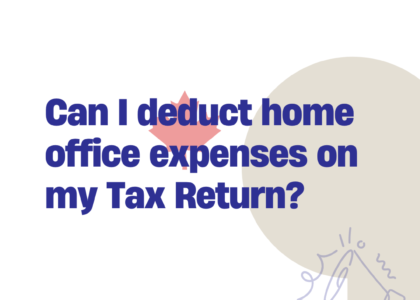To calculate your income tax in Canada, you’ll need to understand both federal and provincial/territorial tax rates. Canada uses a progressive tax system, meaning your income is taxed in brackets, with higher rates applying to higher income levels. Here’s a step-by-step guide to help you calculate your income tax:
1. Determine Your Total Income
Start by adding up all forms of income, including:
- Employment income
- Self-employment income
- Investment income (dividends, interest, capital gains)
- Pension income
- Other taxable income (e.g., rental income, EI benefits, etc.)
2. Subtract Deductions
Certain deductions can reduce your taxable income, such as:
- RRSP contributions
- Childcare expenses
- Union/professional dues
- Moving expenses (if applicable)
- Employment expenses (if allowed)
This will give you your taxable income.
3. Apply Federal Tax Brackets (2024 rates)
The federal government applies different tax rates to different portions of your taxable income:
- 15% on the first $55,359 of taxable income
- 20.5% on income over $55,359 and up to $110,717
- 26% on income over $110,717 and up to $221,708
- 29% on income over $221,708 and up to $316,921
- 33% on income over $316,921
4. Apply Provincial/Territorial Tax Rates
Each province and territory has its own tax brackets and rates. For example, here are the 2024 tax brackets for Ontario:
- 5.05% on the first $49,231
- 9.15% on income between $49,231 and $98,463
- 11.16% on income between $98,463 and $150,000
- 12.16% on income between $150,000 and $220,000
- 13.16% on income over $220,000
Tax rates and brackets vary by province, so you’ll need to check the rates for where you live.
5. Calculate Non-Refundable Tax Credits
After calculating your federal and provincial taxes, you can reduce them by applying non-refundable tax credits. These are credits like:
- The Basic Personal Amount: $15,000 federally for 2024 (other credits available provincially)
- Employment credits
- Charitable donations
- Medical expenses
Non-refundable credits reduce your taxes payable, but they cannot take your taxes below $0.
6. Add or Subtract Other Amounts
You may have other taxes to pay or refundable credits to apply, such as:
- The Canada Workers Benefit (if you’re eligible)
- Tuition credits
- Provincial-specific credits (like climate action incentives)
7. Final Tax Payable
Once all these factors are considered, you’ll have your final tax payable. Subtract any taxes you’ve already paid (through payroll deductions, for example), and you’ll see whether you owe taxes or are entitled to a refund.
Example Calculation
Let’s say your taxable income is $70,000 and you live in Ontario:
Federal tax:
- First $55,359 at 15% = $8,303.85
- Remaining $14,641 at 20.5% = $2,999.40
- Total federal tax = $11,303.25
Provincial tax (Ontario):
- First $49,231 at 5.05% = $2,485.17
- Remaining $20,769 at 9.15% = $1,900.40
- Total provincial tax = $4,385.57
Non-refundable credits:
- Federal Basic Personal Amount ($15,000 at 15%) = $2,250
- Provincial Basic Personal Amount ($11,865 at 5.05%) = $599.12
Total tax payable = ($11,303.25 + $4,385.57) – ($2,250 + $599.12) = $12,839.70






